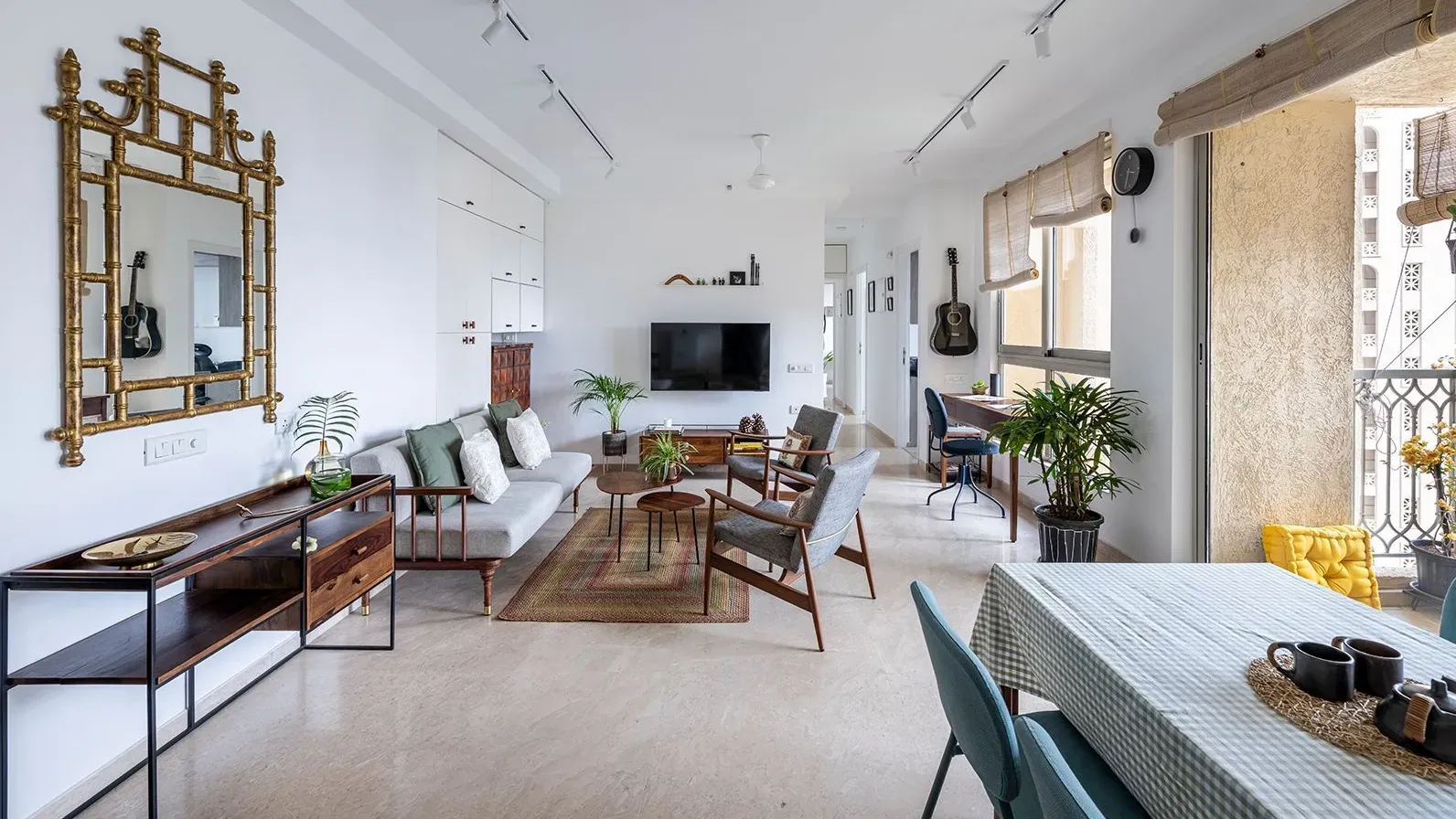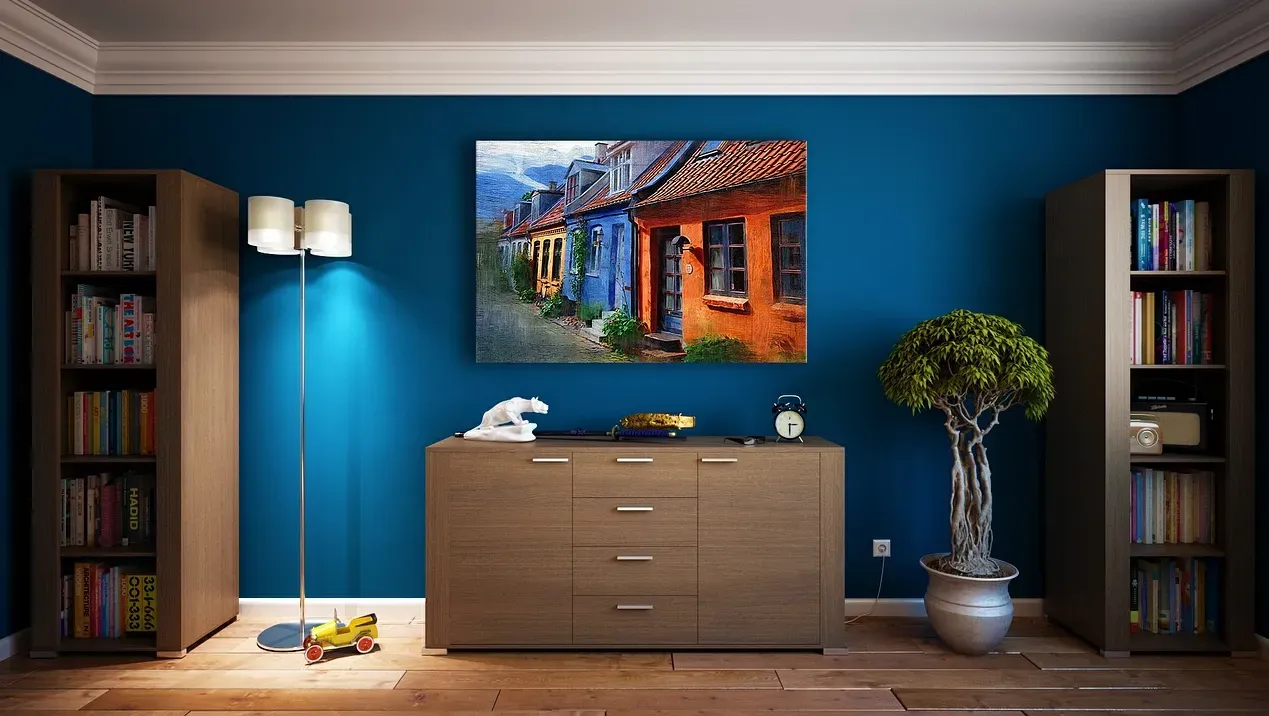What a Home Says About a Person: Real Estate and Social Status in India

By
Shrusti Naik
Posted on November 21, 2025. 10 mins

Introduction

In India, a home is far more than just shelter,it is a canvas for identity, a statement of achievement, and often a visible badge of social status. Within urban landscapes like Mumbai or Delhi, owning a large, well-located flat signals not only financial capability but cultural standing. As sociologist Gautam Bhan observes, housing embodies “social mobility, aspiration and belonging in Indian cities”. ([Wikipedia][1])
This article examines the relationship between real estate and social status in India, from how homes become status symbols, to the sociological implications of owning property, to class divides and identity formation. With data from 2023-25, regulatory context and Indian culture in focus, we aim to shed light on “what a home says about a person.” You might as well read The Power of Color: How to Use Color Psychology in Home Decor for a Harmonious Home
Why Housing Reflects Social Status in India
Symbolism, prestige and aspiration
In Indian society, owning a home, especially being able to say “we own our flat” rather than rent, is a mark of stability and social attainment. A recent article states:
“Owning a home in India is often seen as a marker of social status and stability… It influences perceptions in areas such as marriage-matchmaking and social gatherings.” ([geosquare][2])
Additionally, luxury homes are explicitly marketed as status symbols. A December 2024 piece noted a surge in luxury property demand (₹10 crore+) in cities like Mumbai, Delhi and Gurgaon, driven by buyers wanting exclusivity and social prestige. ([Elite Agent][3])
Social mobility and homeownership
Research shows homeownership in India is also linked to social mobility and identity. A 2024 paper found that less-economically secure households have higher homeownership propensity, suggesting it is used as a strategy to stabilise status. ([SAGE Journals][4])
In short: owning the “right” home communicates upward mobility, consolidates social identity and provides psychological assurance.
Home Size, Location & Status: Mapping the Signals
There are three major dimensions in which a home signals status: size/quality, location, and ownership vs renting.
Size & quality
Larger flats, high-ceiling residences, premium amenities and branded developments are all status markers. Table-1 gives a rough sense of how signals work (not absolute, but indicative in Indian metros).
Table 1 – Home attributes and social signals
| Attribute | Status implication | Indian context example |
|---|---|---|
| Large carpet area (3 BHK+) | Leisure, space to host, lifestyle demonstration | High-end 3 BHK in Mumbai’s Powai area |
| Premium amenities (sky-pool, concierge) | Exclusivity, community of peers | Ultra-luxury towers in Worli, Mumbai |
| Prime location (sea-view, central) | Placement among elite social geography | Mumbai sea-facing flats in ₹80 crore + band ([Financial Times][5]) |
| Ownership vs renting | “I belong”, “I have made it” | Middle-class families emphasising home ownership ([geosquare][2]) |
Location as status marker
In Indian cities, where you live often conveys more than how big your flat is. Research shows urban housing corridors and connectivity matter for value, but also for social signalling. For example, a flat in a prestige location, even if smaller, may signal higher status than a large home in a fringe suburb. Urbanization studies emphasise that housing is deeply intertwined with social identity. ([NIUA][6])
Ownership, Class Divide & Access
Who gets to own the status home?
While the aspiration is widespread, access is unequal. The real-estate sector has grown, but affordability remains a challenge. According to a Reuters poll in 2025:
“Home prices expected to rise 6.3% in 2025 and 7.0% in 2026… Entry-level buyers are being pushed into rentals.” ([Reuters][7])
Research from IIMA shows housing prices over the decade outpaced GDP growth, favouring those already able to invest. ([Indian Institute of Management Ahmedabad][8])
Thus, home as status symbol also reinforces class divide: those who can buy gain prestige, those who cannot often rent and lose out on that symbolic capital.
Social identity, community and belonging
Beyond size and location, the home is about belonging. A home in a gated community, premium development or in a peer-rich neighbourhood signals belonging to a higher social cohort. Sociological studies note the salience of home-ownership in constructing identity and social networks. ([SAGE Journals][4])
Real Estate, Social Mobility & the Indian Middle Class
Aspiration and reality
For many in India’s aspirational middle class, buying a home is a key milestone in social mobility. It represents moving from “tenant” to “owner”, from temporary to permanent, from outsider to insider.
However, affordability constraints limit this upward path. An Economic Times article in August 2025 noted:
“Buying a house on ₹12 lakh per annum income is ‘impossible’? … middle-class dreams clash with real estate reality.” ([The Economic Times][9])
Structural conditions
Beyond individual aspiration, broader structural factors play a role:
- Urban land scarcity and regulatory bottlenecks raise home-prices.
- The asset class of housing has become dominant for many Indian families. ([Indian Institute of Management Ahmedabad][8])
- Outcomes vary by religion, caste, region because ownership correlates with social networks, access to finance and historic privilege. ([SAGE Journals][4])
Implications for Buyers & Society
What buyers should know
- Understand the symbolic dimension: you are not just buying bricks, you’re buying a narrative about yourself.
- Evaluate whether your home choice aligns with your social environment (peer group, family, neighbourhood) and future mobility (resale, upgrade).
- Beware of conflating status with value: a high-status home is not always the best financial decision if it exceeds affordability.
- Recognise that ownership is only one dimension of status; maintenance, community and neighbourhood matter.
Societal consequences
- Urban inequality: premium homes become enclaves, separating elite from rest.
- Affordability crisis: when status homes dominate, entry-level buyers are squeezed.
- Mobility narrative: home-ownership as a route to social mobility may falter if costs remain unreachable.
Conclusion

Your home in India says a lot about you, your aspirations, your social circle, your sense of achievement and belonging. From a modest flat to a luxury sea-facing residence, real estate remains one of the most visible and enduring status markers in Indian society. Yet, as we’ve seen, this also ties into deeper issues of class, access and identity. For buyers and observers alike, understanding the symbolism of home-ownership, and its implications, is as important as understanding the market itself.
Frequently Asked Questions
1. Why is owning a home considered a status symbol in India? Because ownership signals stability, financial achievement and social belonging, renting often lacks the same perceived legitimacy. ([geosquare][2])
2. Does a bigger or more expensive home always mean higher status? Not always, location, peer group and neighbourhood context often matter more in signalling status than sheer size alone.
3. How does home-ownership affect social mobility? Ownership can act as a stepping stone in social mobility, providing economic stability and social identity. However, structural barriers mean not all households benefit equally. ([SAGE Journals][4])
4. What are the risks of treating a home purely as a status asset? You may over-pay, end up with a property that strains finances, or purchase in a location that limits future resale or upgrade options.
5. How can middle-class buyers choose a home reflecting status but also value? Focus on neighbourhood and growth potential, align with your socio-economic peer group, stay within budget and view the home as both living space and long-term asset.
References
- Das, P. & Anchalia, P. “Real Estate Sector in India,” IIMA – MCFME, Mar 2023. ([Indian Institute of Management Ahmedabad][8])
- “India’s real estate and housing sector has assumed a hydra-form,” NIUA, 2019. ([NIUA][6])
- “The cultural and emotional significance of real estate in India,” GeoSquare, May 2025. ([geosquare][2])
- “Real estate becomes India’s status symbol as luxury properties dominate,” Elite Agent, Dec 2024. ([Elite Agent][3])
- “Salience of social identities in explaining homeownership in India,” SAGE Publications, Nov 2024. ([SAGE Journals][4])
- “India’s housing market ranked 15th globally, 7.7% annual price growth,” IBEF, Q1 2025. ([ibef.org][10])